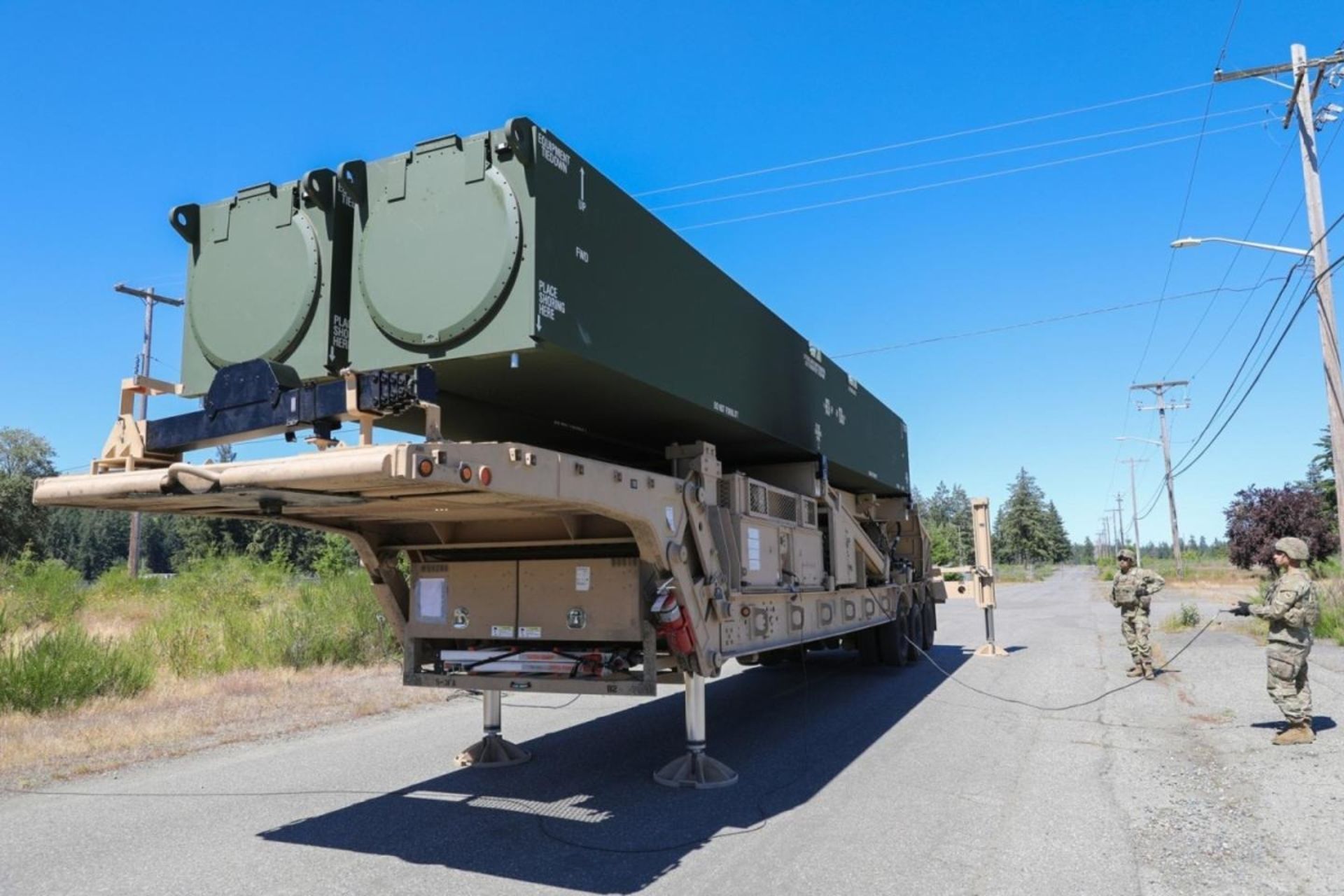Breaking News
US Army Advances Deployment of Hypersonic Missiles with Dark Eagle Tests.
The US Army is moving towards the full deployment of its first hypersonic missiles, with its Long-Range Hypersonic Weapon Battery participating in Exercise Resolute Hunter 24-2 at Naval Air Station Fallon, Nevada, alongside forces from the Five Eyes alliance. These missiles, capable of flying at over five times the speed of sound, are highly sought after by major and medium-sized military powers. Their ability to achieve such speeds and remain maneuverable allows them to bypass conventional air defense systems and strike targets with kinetic energy alone, eliminating the need for explosive warheads.
Follow Army Recognition on Google News at this link

Dark Eagle is a medium-range surface-to-surface hypersonic missile developed for the US Army by Lockheed Martin and Northrop Grumman, with variants for deployment on US Navy ships and submarines (Picture source: US Army)
The US has lagged behind countries like Russia, which has already used hypersonic missiles in Ukraine. However, part of this delay is attributed to a meticulous approach in American engineering, focusing on making these missiles practical and integrating them with existing forces rather than deploying them quickly. The recent exercise, conducted from June 25 to 27, 2024, was part of the Department of Defense’s only dedicated exercise for battle management, command and control, intelligence, surveillance, and reconnaissance. Its goal was to demonstrate how Dark Eagle can integrate with joint command forces in real time.
Dark Eagle is a medium-range surface-to-surface hypersonic missile developed for the US Army by Lockheed Martin and Northrop Grumman, with variants for deployment on US Navy ships and submarines. Its primary mission is to suppress long-range enemy fire and destroy high-value targets at distances up to 3,000 km. The system includes a mobile launcher with two canisters, each containing a rocket booster and a Common-Hypersonic Glide Body (C-HGB) in a nose cone. The rocket propels the glide body to high altitude, from where it glides under control to its target, reaching a maximum speed of Mach 17.
In addition to the recent exercise, Dark Eagle has been tested in various forms since 2017, including a full test this year at the Pacific Missile Range Facility in Kauai, Hawaii. Once fully operational, the Army plans to deploy Dark Eagle in a battery of eight missiles with four M983 trucks and trailers, each with two missiles in launch canisters, along with a command vehicle.
Recent tests have taken place amidst delays and technical challenges. The Army hoped to begin deploying Dark Eagle within the next two months, about a year later than initially planned, following the cancellation of three test launches last year. In June, the Pentagon announced a successful test of a common hypersonic missile designed for both the Army’s Dark Eagle and the Navy’s Intermediate Range Conventional Prompt Strike (IRCPS) system. However, no known complete test of the missile involving a representative production launch system has been conducted.
A recent Army-Navy test took place at Cape Canaveral Space Force Station in Florida. While details remain vague, public notices for aviators and mariners suggest it occurred on July 25. This test is widely considered an evaluation of the Dark Eagle system, although it has not been officially confirmed. The Dark Eagle/LRHW program is a joint effort between the Army and the Navy, ongoing since 2019, aiming to develop a hypersonic boost-glide vehicle.
Persistent challenges and uncertainties surrounding US hypersonic weapons programs, including Dark Eagle and IRCPS, continue to raise questions about their future. The Army still hopes to deploy Dark Eagle by the end of the current fiscal year, but necessary tests and adjustments may delay this goal.
The initial Dark Eagle/LRHW unit, Battery B, 5th Battalion, 3rd Field Artillery Regiment (Long Range Fires Battalion), part of the 1st Multi-Domain Task Force, is already in place at Joint Base Lewis-McChord, Washington. This unit recently participated in Exercise Resolute Hunter 24-2, demonstrating the crucial role of land power and the indispensable contribution of the Army to joint operations.
Deployment of the IRCPS system on Zumwalt-class stealth destroyers is planned for 2025, and on Virginia-class Block V submarines in 2028. The implementation of these programs remains uncertain, but the US continues to develop hypersonic capabilities to maintain military superiority against potential adversaries.

Dark Eagle canisters on transporter at Joint Base Lewis-McChord during Exercise Resolute Hunter 24-2 (Picture source: US Army)


























